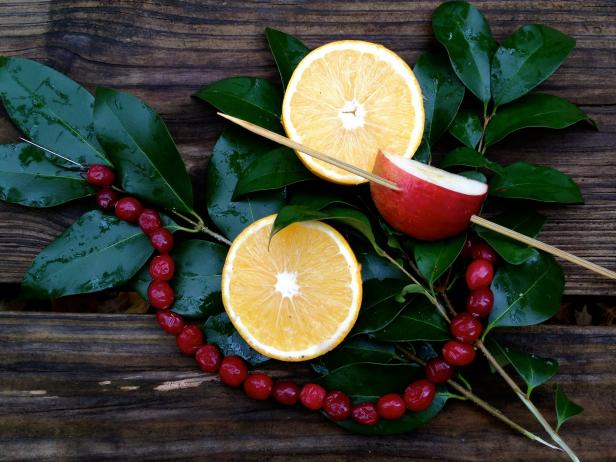In some ways the best ways to help wildlife is to do nothing...
Leave brush piles; this can include leaving cut Xmas trees along a fence line to offer shelter. Leave piles of leaves, don't wash your windows (clean windows reflect causing bird strikes) on the outside. All the "cleaning" and "tidying up" that most folks do is actually creating unsafe environments for wildlife.
Short term: bird feeders in sheltered locations, high enough that they are not a mammal attractant (bear, squirrel, raccoon), and fill with quality feed suitable for the birds in your area. Speak with the local birders, a specialty bird store or go online to determine what the birds that frequent your property are and the best food sources for them.
Suet cakes are only a good as the ingredients, most Dollar Store or Pet stores sell garbage suet cakes; determine who would eat your suet cakes, and what ingredients are suitable.
Water: even if you have to replace it regularly, or heat it, this can be even more critical than food when everything is frozen.
Shelter: as previously mentioned piles of brush, Xmas trees, even lumber under a tarp or an old shed can provide "shelter from the storm". When it is really nasty out, I find our wee songbirds (Junco's, Sparrows, Siskins, Chickadee's) will seek shelter on the rafters of our covered deck.
Long Term: Evergreen hedges/trees/shrubs can be critical habitat for wee critters, providing shelter as well as a source of food; many produce berries that although withered are a great source of food. Consider planting bird friendly evergreens.
Water: Consider a winterized pond or cold weather water source; this could be as simple as a hanging chick waterer, or as fancy as a heated bird bath.
Food: Consider planting seed and berry bushes that are wildlife friendly...many critters, birds included do actually STORE seeds and nuts for future use; especially the chickadees, jays and nuthatches.
Invest in quality feeders and feed. A quality feeder ideally is one suitable for your climate - I am where it is very rainy in the winter, so unless my feeders are under cover so there are issues with wet seed from rain - and the sort of seed you intend to use.
In my opinion, most feeders made from plastic are a waste of time, rarely last a year, and quickly end up as garbage as they spill/waste WAY too much feed (leading to unwanted ground feeders such as rat, bear or raccoon) or literally fall apart. Some are only suitable for certain seed types - will only work with large or small seed.
Consider using your clothes line to hold feeders, fill them, clip them on, run them out the line - often these are high enough to ensure you are not encouraging the wrong visitors.
Consider getting "branch hooks" (metal units that the feeders hang from ranging in length from 8 inches to 3 feet) so that feeders can be hung in trees that otherwise would be too tall, or too close to the branches (pesky rodents and coons); the longer ones are too hard for rats to climb up and down, and can be put on the end of a rope or chain attached to a very high branch.
https://www.amazon.ca/Perky-Perky-Pet-67AK-12-Inch-Feeders/dp/B01FWQU87Q/ref=sr_1_17?keywords=branch+hook&qid=1638827646&rnid=5264023011&s=lawn-garden&sr=1-17
My absolute favorite bird feeder is this pricey unit:
https://www.amazon.ca/gp/product/B000667W54/ref=ppx_yo_dt_b_search_asin_title?ie=UTF8&psc=1
It has massive capacity, and is essentially both a tube and hopper feeder in one. It easily handles all seed from black oil sunflower in the shell to Thistle or Nyger seed, and everything in between. It is a pain to clean, but as it holds so much it is not often it needs a thorough, take apart cleaning. I have six of them, each holding approximately 3 gallons or 10-15 lbs of seed, they usually cost around $100-$130 which seems absolutely outrageous, but they literally will last a life time as they are almost entirely made from metal. Mine are over two years old, and showing zero signs of deterioration plus, they are relatively squirrel proof.
![]()
![]()
I find the neighbors ducks are constantly under my bird feeders, cleaning up the scraps - this may be an ideal location for wild feeders if there are no transmissible disease issues in your area - this ensures there are none left to attract unwanted critters.
I do not live where providing fruit would be useful, but I have heard in many places this is suitable; it would be worth researching.
Hummingbirds: We have been colonized by Anna's Hummingbirds, to the point that we now have six feeders going 24/7, keeping them from freezing can be a huge issue as they are especially dependent on them during a cold weather. Some folks place old socks over feeders, others wrap them with incandescent Xmas lights, others swap feeders, rotating them so that they do not freeze.
I am in the process of constructing feeders warmers to ensure their feeders do not freeze in our infrequent cold snaps. You can purchase them (called a Hummingbird Hearth:
https://www.amazon.ca/Hummer-Hearth-Hummingbird-Feeder-Heater/dp/B078CY275X/ref=sr_1_1?crid=3NU5YYEQ1H6VP&keywords=hummingbird+feeder+heater+-+and+roof%2Fcover&qid=1638827697&sprefix=hummingbird+feeder+hater%2Caps%2C237&sr=8-1 ) but I could not ever justify $300 for feeder heaters. Based on this picture, and some research, I am repurposing small (5.5 inch??) heat lamps, putting in a small 11 watt bulb (theirs uses either a 7 or 15 watt bulb) and some bungy cords. I figure, all in, it will cost me $100 for six of them, if all materials are purchased new. This same system could also be used to keep a constant, unfrozen water source for other birds.
![]()





 4
4




 1
1




 7
7








 1
1




 1
1




 1
1




 5
5





 1
1




 1
1




 1
1




















 1
1








 2
2




 1
1












 2
2












